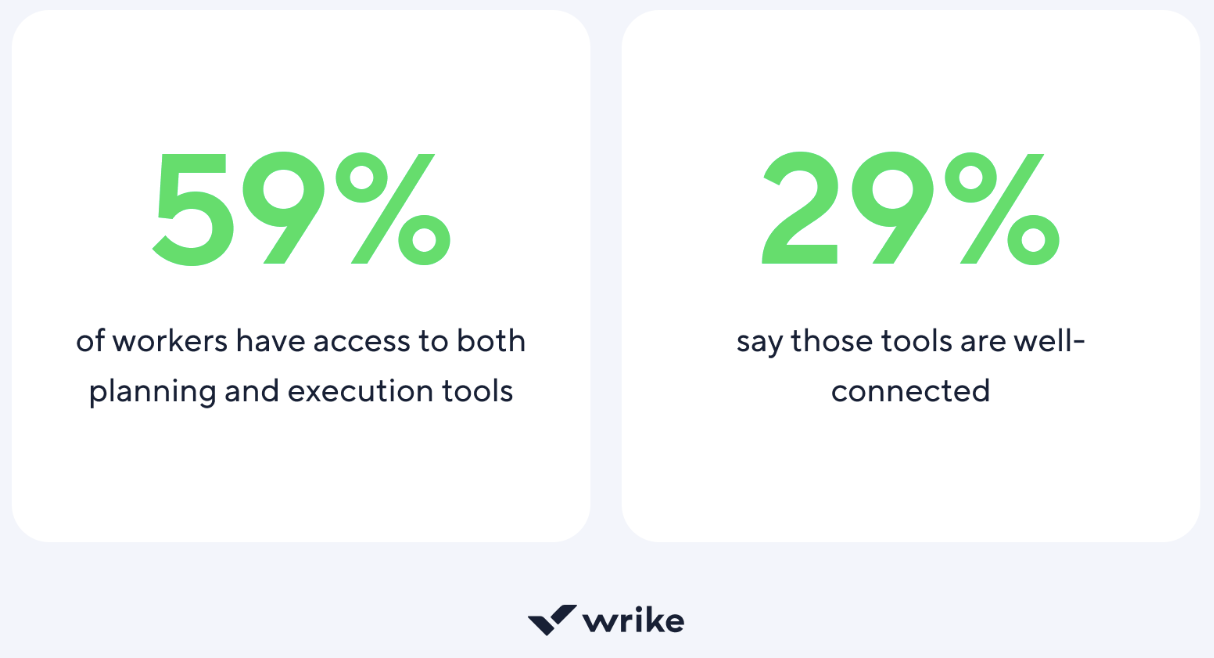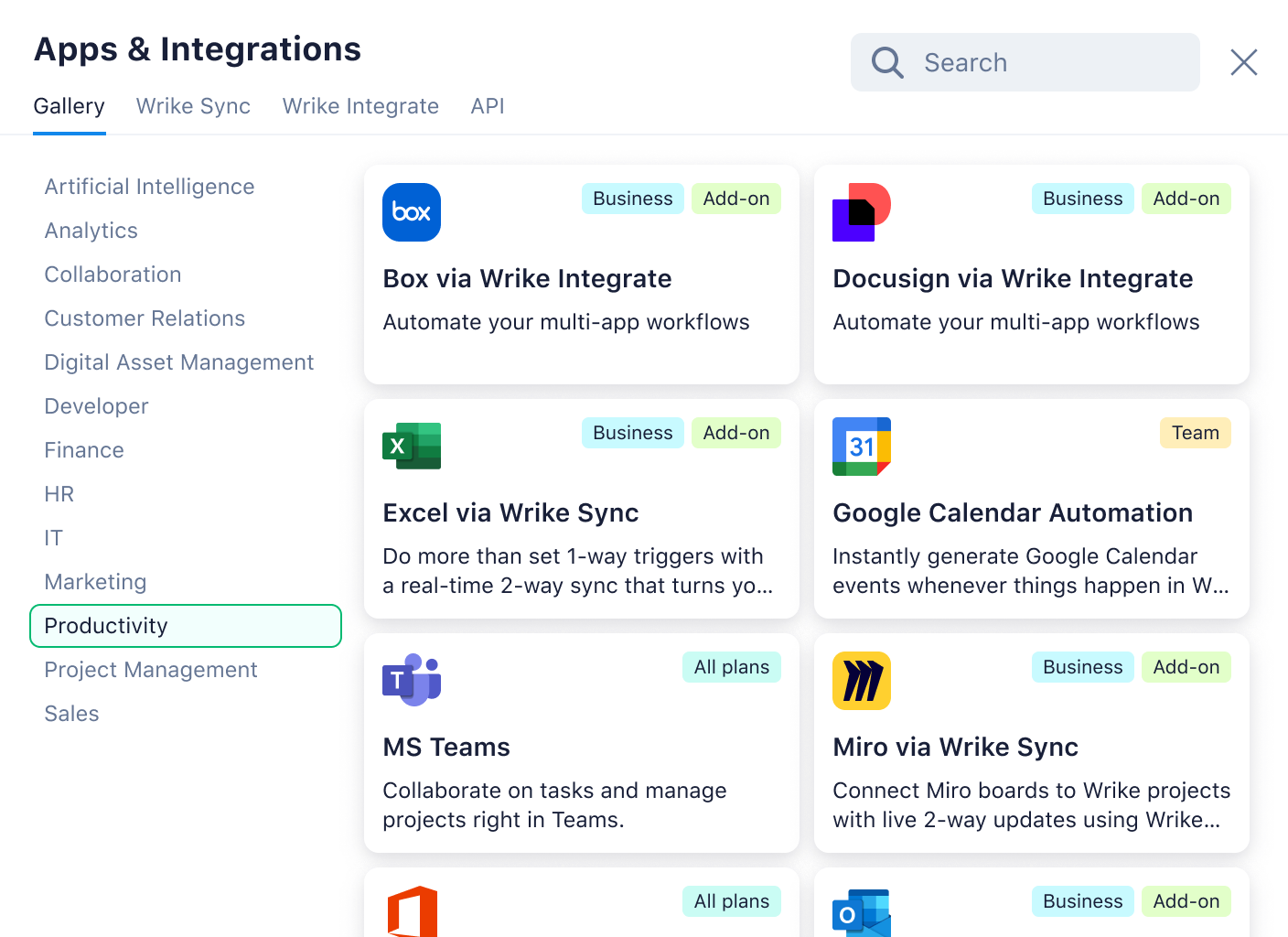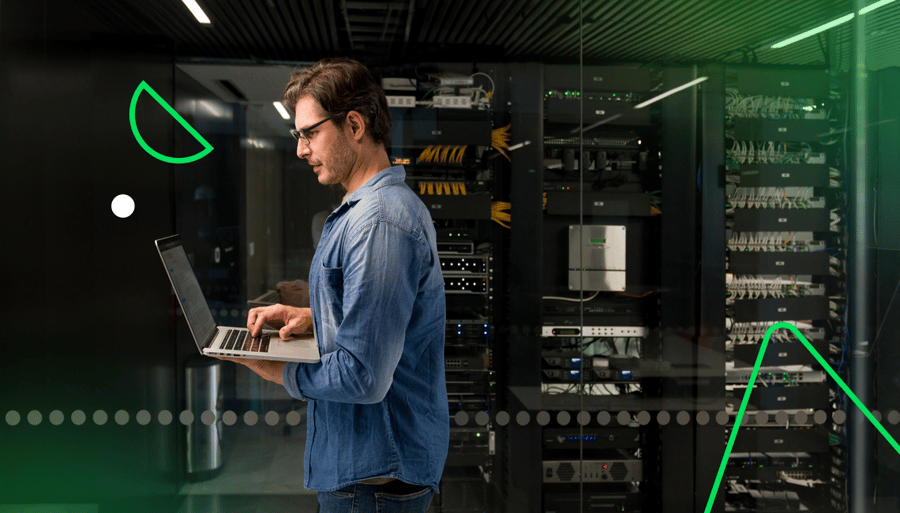Key takeaways:
- What is the Wrike MCP Server? This is a bridge that connects Wrike with AI assistants, enabling real-time data access using natural language for seamless task management.
- How does the MCP Server solve common issues? It breaks down silos, reducing tool sprawl by enabling smooth communication between systems without custom code.
- What are the key benefits for users? Users gain real-time insights, enterprise-grade security, customized intelligence, and the ability to consolidate workflows through AI assistants.
- What industries benefit from the MCP Server? Teams in manufacturing, product development, marketing, and finance can leverage real-time AI insights to enhance productivity and collaboration.
- How does Wrike ensure security with the MCP Server? The server is certified compliant, includes strict data controls, and maintains transparency and governance to protect sensitive information.
For years, digital workplace platforms have promised a single source of truth for work. But every team and organization brings unique demands, and silos persist between people, processes, and technology. The rise of AI agents could deepen those divides — unless we rethink how systems connect.
At Wrike, we believe the future of work is powered by the seamless collaboration of humans and AI. That’s why we developed our Wrike MCP Server. This is a breakthrough that enables your favorite AI assistants to work smarter, faster, and more securely with the real-time data that powers your organization.
By connecting Wrike’s MCP Server to your AI workforce, you can break down barriers and let work truly flow. This post explores how the MCP Server works, the problems it solves, and what it means for the future of intelligent work.
What is the Wrike MCP Server?
An MCP Server leverages the Model Context Protocol (MCP), which standardizes how AI assistants connect with business applications in a single, synchronized session. In a nutshell, the Wrike MCP Server acts as a bridge between Wrike and AI assistants like Microsoft Copilot, Claude Desktop, and others.
With the MCP Server, your AI assistants can securely access, understand, and act on Wrike data in real time using natural language (everyday words and phrases). So you can give instructions like “Show this week’s high-priority tasks” instead of using technical commands, and manage tasks and projects right in the tools you already use.
Why is this a big deal?
It’s no secret that modern organizations are awash with data. But the reality is that most of it is siloed, stuck in spreadsheets, CMS software, or even emails. With the rise of AI assistants, this fragmentation can actually get worse.
Key benefits for customers
The Wrike MCP Server changes how your AI assistants work for you. Before we dive into the details, here’s how it benefits you.
|
Benefit |
What it means for you |
| Real-time insights | Instantly access up-to-date project, task, and workflow data via your AI assistant. |
| Seamless AI-powered insights | Make smarter choices without switching tools or exporting data. |
| Custom intelligence |
Allows AI copilots that understand your unique workflows and KPIs. |
| Enterprise-grade security | Rely on rigorous data separation, access controls, and compliance. |
| No more silos | Connect Wrike, ERP, CRM, and more — all through your AI assistant. |
| Rapid integration | Developers no longer need to build custom APIs every time, enabling faster integrations. |
How does the MCP Server work?
Behind the scenes, the Wrike MCP Server coordinates every request between your AI assistant and Wrike. Instead of moving data manually or relying on custom APIs, it provides a direct, real-time path for information to flow where it’s needed.
Here’s how it works in practice:
- Your AI assistant makes a request
A teammate might ask, “Show high-priority tasks due this week.” The AI assistant passes that request through its MCP connection. - The MCP Server matches the request to Wrike data
It checks permissions, understands what information or action is needed, and retrieves the right projects, tasks, or updates. - Results flow back instantly
The server sends a structured response to the AI assistant, which presents the information or creates the task — no extra clicks or data exports required.
By using MCP’s standardized way of sharing context, the Wrike MCP Server ensures that data stays secure, up to date, and ready for AI to act on. The result is faster decisions and a smoother flow of work across teams and tools.
Examples of the MCP Server in action
The Wrike MCP Server brings AI into the daily flow of work, not as a side tool, but as part of how teams plan and deliver. Here’s how three very different teams are already using it.
1. Manufacturing operations with Microsoft Copilot
Tom, plant operations manager
Tom oversees production for a global manufacturer. His Microsoft Copilot is connected to the company’s Manufacturing Execution System (MES), SAP for inventory and procurement, and now Wrike for manufacturing project management, operational projects, and process improvements.
Instead of checking multiple dashboards, Tom simply asks Copilot, “What production risks could delay this week’s schedule?” and watches as:
- Copilot pulls live project data from Wrike, equipment status from MES, and supply details from SAP.
- He receives a single, consolidated answer with risk assessments and recommended actions.
Tom can immediately adjust schedules or trigger procurement steps — all without manual cross-referencing.
2. Product development with a custom Slack assistant
Raj, product lead
Raj’s software team uses Wrike for GitHub to manage code and sprint planning. His custom Slack assistant already handles daily summaries and technical questions.
With Wrike’s MCP Server, Raj can now ask, “Which features scheduled for this sprint are blocked by unresolved GitHub bugs?” Then:
- The assistant retrieves sprint tasks from Wrike.
- It cross-references open issues in GitHub and reports back in Slack.
Raj sees a clear status update in seconds and can take immediate actions within Slack, saving hours of manual checks and helping the team remove blockers faster.
3. Marketing campaigns with Anthropic’s Claude
Sarah, digital agency manager
Sarah manages multiple client campaigns. Wrike MCP connects her workspace directly to Anthropic’s Claude, her preferred AI copilot.
She can use Wrike’s Copilot to review project progress, then query Wrike data directly from other systems to keep work aligned. From there, she can prompt Claude to draft website copy, email campaigns, or other creative assets. That means:
- Tasks update in Wrike as content is generated.
- Deadlines stay on track without extra admin work.
This creates faster creative turnaround and smoother collaboration between human and AI contributors.
Wrike MCP Server delivers value across industries
Wrike MCP Server brings AI into everyday work across industries. Marketers can ask natural-language questions to instantly surface campaign KPIs, while manufacturers use it to spot production delays early and adjust schedules. Project managers and finance teams can tap MCP-powered insights to track budgets, uncover hidden trends, and assess risk based on real business data.
No matter the industry, Wrike MCP Server also makes it easy to connect existing workflows directly into Wrike. For example, a simple flow in n8n (a workflow automation platform) connects through the MCP Server to Wrike, retrieves information on your behalf, and automatically summarizes it back into a Wrike task. Agents can then create and assign tasks automatically while gaining context from Wrike data in real time.
While the MCP Server is a powerful way to bridge AI and live project data, it’s just one of several options. Next, let’s explore other ways to integrate data into Wrike to fit your team’s unique needs.
Other ways to integrate data into Wrike
The Wrike MCP Server is a powerful new option, but it’s not the only way to bring data together inside Wrike.

Depending on your needs, you can choose from several proven integration paths:
- Native integrations
Connect Wrike directly with tools like Microsoft Teams, Salesforce, and Google Workspace. These ready-made integrations let you sync tasks, calendars, and files with minimal setup. - Wrike Integrate (iPaaS)
Use Wrike’s integration platform to build custom, automated workflows across hundreds of SaaS applications. Drag-and-drop recipes make it easy to pass data between Wrike and ERPs, CRMs, or other line-of-business systems. - Wrike API
For teams with development resources, the RESTful API provides full control to create bespoke connections, push or pull data, and build Wrike into larger enterprise architectures.
Each approach complements the Wrike MCP Server. Whether you want ready-to-go integrations, tailored automation, or deep API access, Wrike offers the flexibility to connect work across every part of your business.
Security and trust are at the core of Wrike MCP
Connecting Wrike data to AI assistants should never mean sacrificing security. The Wrike MCP Server is protected by the same AI Adoption Principles and enterprise safeguards that secure all Wrike solutions.
- Certified and compliant: SOC 2 Type II, ISO 27001, ISO 27017, ISO 27018, ISO 27701, and TX-RAMP Level 1. Every AI feature undergoes enhanced security checks, including OWASP ML standards.
- Controlled data use: Generative AI runs on Microsoft Azure OpenAI Service with strict access controls. Customer data is never used to train Microsoft or third-party models.
- Transparent and human-verified: Features are stateless, so enabling AI doesn’t change data privacy. All outputs require human review and remain explainable.
- Governed and protected: Sensitive PII and regulated data are prohibited. Wrike continuously aligns with global AI standards.
With Wrike MCP, enterprise teams can confidently connect AI assistants to live project data while staying secure, compliant, and in control.
Bringing AI and work together
The Wrike MCP Server is designed to make AI a natural part of everyday work. It is secure, reliable, and ready for real projects. It closes the gap between planning and execution so teams can act on the latest data without adding complexity.
If you’re ready to see how AI can help your organization move faster and stay aligned, explore Wrike’s MCP Server and the integrations that fit your workflows.







